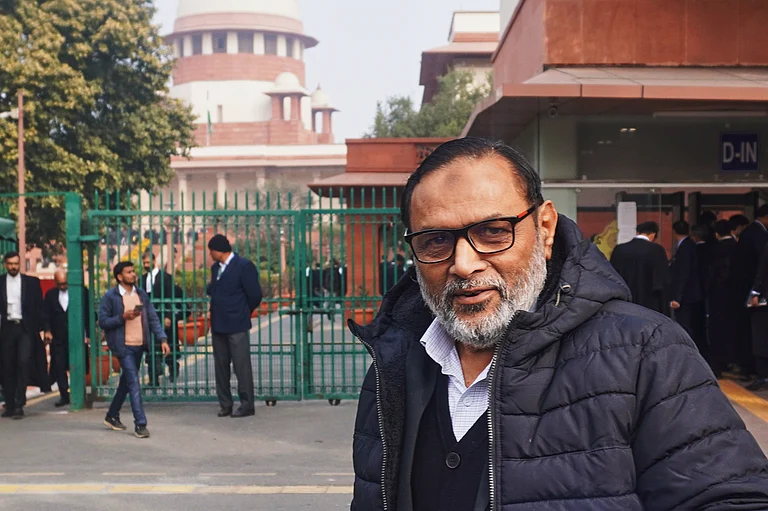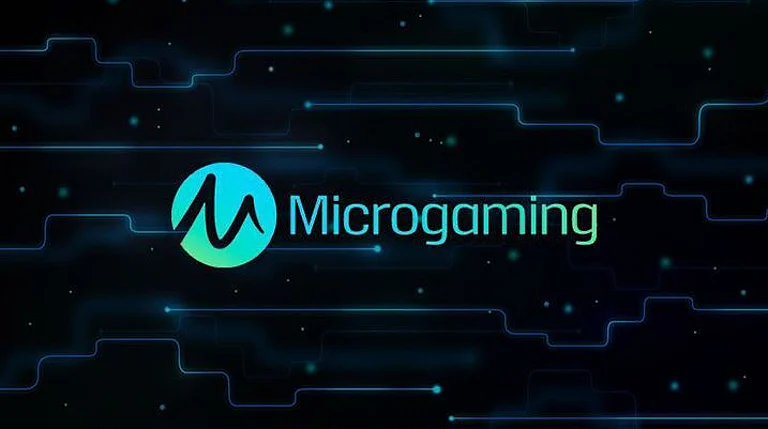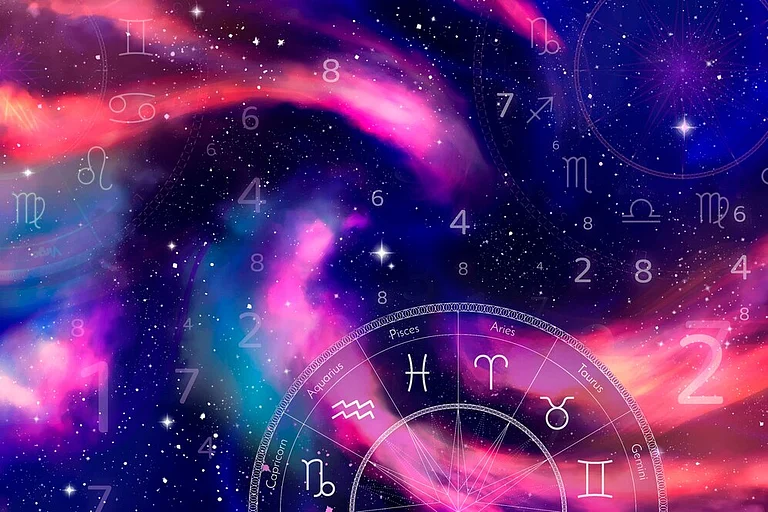The grand gateways, Nandi Dwar and Pinaki Dwar, besides the historic Rudrasagar Lake, welcome worshippers to a time extraordinaire, where Mahakaleshwar Lord Shiva stands beyond the binary of life and death.
The Rs 856-crore Mahakaleshwar Temple corridor development project in Ujjain, Madhya Pradesh, carries all those ancient glories that Kalidas once described in his classic Abhigyanam Shakuntalam. The 900-metre corridor beside the Rudrasagar Lake flanked by 108 pillars inscribed with shlokas from Shiv Purana and 50 murals narrating stories of Shiva’s mythological presence, make it palatial. The immediate feeling within the corridor seems like reliving a time when King Vikramaditya perhaps took a stroll on the banks of the Shipra, the river by which the ancient city of Ujjaini was founded.
The only south-facing Jyotirlinga among the 12 holy Jyotirlingas across the country, Mahakaleshwar is perceived to be a space where all the sources of energies amalgamate to celebrate the Swayambhu, the self-proclaimed. Shivraj Singh Chauhan’s government started the project in 2016, and brought in artisans from Rajasthan, Gujarat, and Odisha. While the main temple edifice already displays Maratha, Bhumija and Chalukya architectural influences, the presence of diverse artisans has made it more universal.
Adding to the lights and the fountains is the presence of Prime Minister Narendra Modi. From the days of Har Har Modi to the time when Himachal Pradesh BJP leader Suresh Bharadwaj called him an incarnation of Shiva, PM Modi has been viewed as an iconic Shaivite. Rows of saffron flags and heavy police presence along the neat and clean road are indications of his entry into Ujjain; the excited crowds and the hopeful eyes bear the essence of a revival, a restoration of lost glory.
“Earlier, it would take so long to reach Ujjain from Indore. Now, the newly made roads and facilities have made it a cake walk,” says Pankaj Sharma, a middle-aged IT official and frequent visitor to the state. The 600 new poles installed to light up the Madhya Pradesh State Highway 27 is testimony to a changing time. As cut-outs of PM Modi adorn the way to Mahakal, a Trishul near Meghdoot Dhaba brings us to a halt. What is the relevance of Shiva in the state? Does the Jyotirlinga have a history since eternity? A peek into earlier references of Shiva during different tenures in this region may give us a history walk.
Evidence in inscriptions
Nilima Chitgopekar, author of The Reluctant Family Man: Shiva in Everyday Life, has researched the root of Shaivism in Madhya Pradesh. Looking at the regimes from 550 AD to 1300 AD, she demonstrated the ubiquitous mention of Shiva. From Nalas, Chhindas, Nagas of Bastar, Kacchapaghatas, Kalachuris of Tripuri and Ratanpur, Chandelas to Paramara of Malwa, the references are full of Shiva. Even references to his sons Ganesh and Kartik take centre stage.

In the Rewa Plate of Jaysimha of 1128 AD, the verses begin with Ganesh, the epithet for whom was Heramba. In this inscription, Heramba is referred to as “Joyless and joyful, handsome and deformed, unimpeded and obstructing is Heramba, the Lord of Ganas”. The plate on which this inscription was found is a grant for a village by Jaysimha, a devotee of Maheshwara or Shiva.
Another instance of such an inscription was a village or temple grant dated 1314 AD that contained references to Shiva. Several other inscriptions indicate the long connections of this region with Mahakaleshwar.
Diverse Cultures, Multiple Shivas
While the different colours of diverse cultures are all set to welcome the prime minister, the spiritual environment and eternal connection through the long corridor is retained by music and enthralling sculptures of Shiva deities.
Talking about the cultural functions, one of the organisers tells Outlook, “There are 32 troupes from different parts of India. About 700 performers will perform to welcome the prime minister. All performances are related to worshipping Shiva.” Asking that his identity be concealed, the official adds, “There are Chhau dancers from Bengal, Adivasis from Malwa region of Madhya Pradesh who will perform the Kathi dance, and other troupes from Assam, Manipur, and Chhattisgarh to celebrate the occasion. All of them will worship Shiva in their own way.”
There is also a bit of competitive spirit in the air. A team from Kashi Viswanath temple, where PM Modi had inaugurated the first corridor, says, “This is similar to our corridor. Only the area is bigger because of the Rudrasagar Lake.” In an oblique reference to their early exposure to such corridors, Kuldeep, one of the dhol performers in his mid-20s, says, “It’s true this is big. But for us, it’s all the same.” The Adivasis from the Gond community did not seem enthusiastic either. “We perform at different programmes. A few days back, it was Karam (Adivasi festival that worships nature) and we performed. Now, we are here.” The performers arrived on October 6 and have been rehearsing ever since. During Dussehra, several Adivasi communities celebrate Dushwa Karam, a festival that also worships nature but not on as big a scale as Karam. In reply to how Mahadev or Mahakaleshwar was connected to their culture, there was an impenetrable silence.
Street Art
The celebration of Modi’s entry into the city has spilled outside the temple premises onto the nearby areas. A resident, living close by for over 30 years, reveals, “This morning, our councillor instructed us to put rangolis and diyas for welcoming Modi.” Rekha, in her early 50s, asked us to look at her daughter Surbhi’s artwork. Surbhi was busy painting the face of PM Modi in front of her house. She has just completed her final year B.Com and most of her paintings depict Hindu mythologies and deities.
As we prepared to leave the half-painted face of PM Modi, Rekha quips, “Shivji is connected to our everyday life. It was earlier a kachrapatti (wasteland) and the corridor has changed it.”
(This appeared in the print edition as "Mahakal Lok: A Connection To Shiva")



























